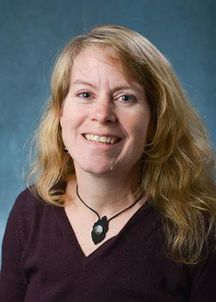-
About
Our Story
back- Our Mission
- Our Leadershio
- Accessibility
- Careers
- Diversity, Equity, Inclusion
- Learning Science
- Sustainability
Our Solutions
back
-
Community
Community
back- Newsroom
- Webinars on Demand
- Digital Community
- The Institute at Macmillan Learning
- English Community
- Psychology Community
- History Community
- Communication Community
- College Success Community
- Economics Community
- Institutional Solutions Community
- Nutrition Community
- Lab Solutions Community
- STEM Community
- Newsroom
- Macmillan Community
- :
- Newsroom
- :
- Learning Stories Blog
- :
- Digital Learning and the Transition to Achieve: A ...
Digital Learning and the Transition to Achieve: A Conversation with Susan Hendrickson
- Subscribe to RSS Feed
- Bookmark
- Subscribe
- Printer Friendly Page
- Report Inappropriate Content
Choosing the right digital learning system is an important consideration for instructors as they plan out their courses -- especially when many classes are taking place remotely. More than just a place to read an e-textbook or complete homework, these systems are interactive tools used by students to complete assignments, track grades, connect with instructors, take quizzes or other self-assessment tools, and more. 
With the launch of Macmillan Learning’s new digital learning platform Achieve, instructors have been making the switch from Sapling, one of the more popular systems for STEM instructors and students. We spoke to Susan Hendrickson, Teaching Professor in Chemistry at the University of Colorado, about her experiences teaching students in her virtual classroom. We also asked her about her experience transitioning from Sapling to Macmillan Learning’s new digital learning system Achieve last fall for her Gen Chem 2 class and this spring for her Gen Chem 1 class.
What have been some challenges with online learning since classes went virtual? How have you addressed them?
Making meaningful connections- between instructors and students, as well as between students- has been very challenging. I think students are more engaged, responsive and motivated when they connect with their instructor and classmates. I try to share a little bit about myself or something funny from the news at the start of class to lighten the mood. This works with some students but not with others.
Another challenge is keeping students organized and able to complete their assignments on-time. They seem to be struggling with their calendars more than usual. Every day and every class must feel the same from their bedroom so they just seem to lose track of what day it is. I have had to step up my own calendaring and To-Do list skills too! I feel like I’ve done more coaching about making schedules and sticking to them since going virtual.
Why did you first decide to use online tools in your class?
Class size! Although I would love to SEE their work and be able to give them personalized feedback. With sections of 100 – 400 and whole courses with enrollments of 600 – 1,000, that’s just not possible. Online homework allows them to practice, get immediate feedback and work according to their own schedules. Otherwise we couldn’t require homework.
People are hesitant to embrace change, but what would you say are the benefits of moving to Achieve vs your experience in Sapling?
There are a few things that I love about Achieve. I love that the grades are synced between Achieve and Canvas. This has saved me about an hour every Tuesday and Saturday morning alone. I also love that they can use a link in Canvas to access the Achieve resources – assignments as well as reading. This might have been possible in Sapling but we didn’t have it set up.
Honestly Achieve isn’t that much different than Sapling – same assignments, same questions (mostly). It wasn’t that much of a change content-wise so the transition has been easy.
How have students responded to Achieve?
I switched with a group of students last spring (Gen Chem 1) in Sapling to this fall (Gen Chem 2) in Achieve and they transitioned with no issues. I don’t think they saw it as a dramatic change since the assignments themselves looked the same. I know they like how easy it is to access the assignments and readings with two clicks from Canvas.
This interview is part of a series focusing on how digital learning is being used in college classrooms and, in particular, what the transition to Achieve has been like.
About Achieve: Macmillan Learning built its new digital learning platform Achieve to help students of all abilities and backgrounds succeed. It offers the content, tools and insights about student success to do just that. Achieve was designed with active learning in mind, and can be used in traditional, online, hybrid, blended, or a fully “flipped” classroom, with options for both synchronous and asynchronous learning to support engagement. It was co-designed with more than 7,000 students and over 100 leading educators and learning scientists both at our company and on our independent review boards. Learn more about Achieve.

